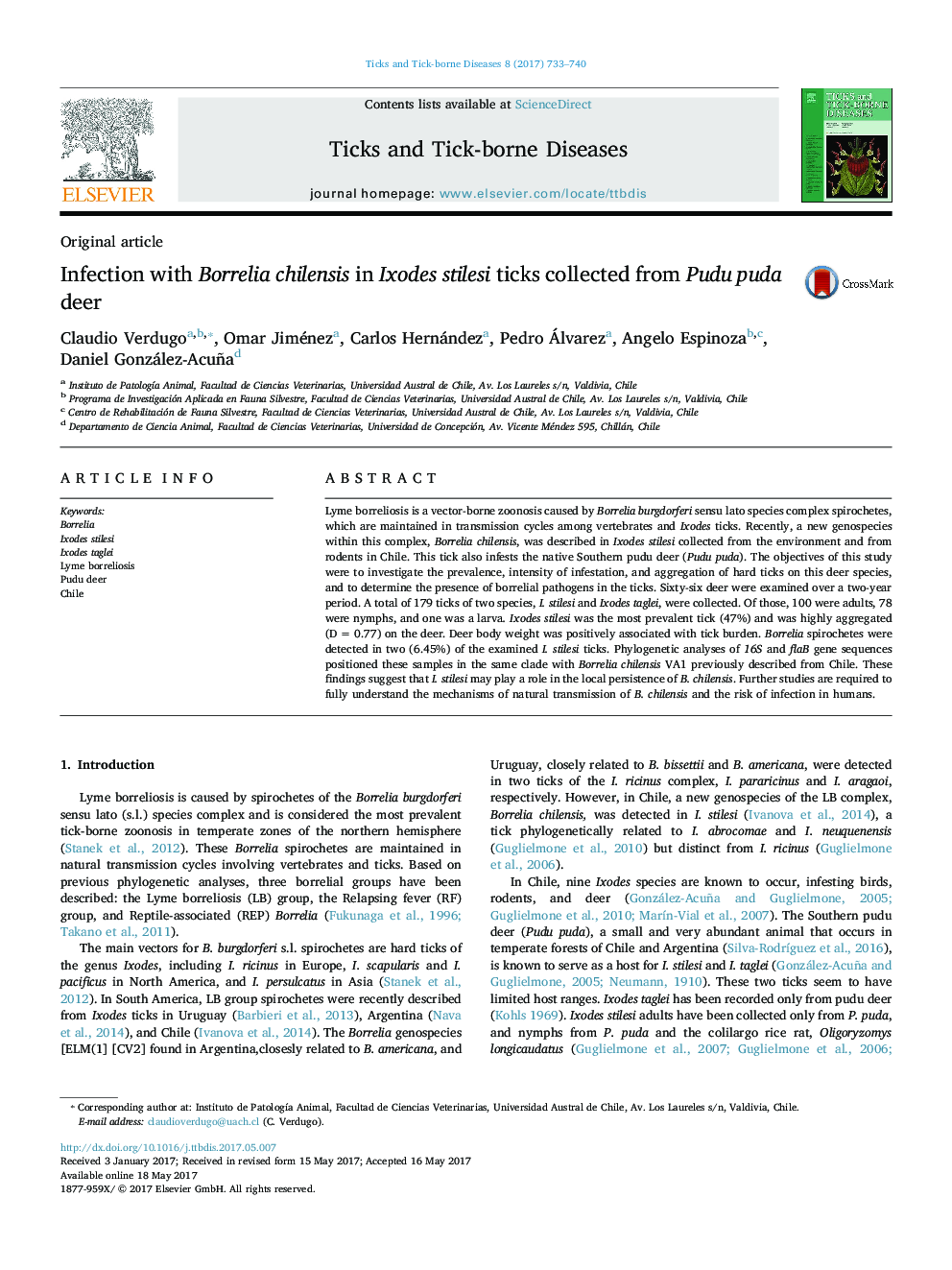| Article ID | Journal | Published Year | Pages | File Type |
|---|---|---|---|---|
| 5546332 | Ticks and Tick-borne Diseases | 2017 | 8 Pages |
Lyme borreliosis is a vector-borne zoonosis caused by Borrelia burgdorferi sensu lato species complex spirochetes, which are maintained in transmission cycles among vertebrates and Ixodes ticks. Recently, a new genospecies within this complex, Borrelia chilensis, was described in Ixodes stilesi collected from the environment and from rodents in Chile. This tick also infests the native Southern pudu deer (Pudu puda). The objectives of this study were to investigate the prevalence, intensity of infestation, and aggregation of hard ticks on this deer species, and to determine the presence of borrelial pathogens in the ticks. Sixty-six deer were examined over a two-year period. A total of 179 ticks of two species, I. stilesi and Ixodes taglei, were collected. Of those, 100 were adults, 78 were nymphs, and one was a larva. Ixodes stilesi was the most prevalent tick (47%) and was highly aggregated (DÂ =Â 0.77) on the deer. Deer body weight was positively associated with tick burden. Borrelia spirochetes were detected in two (6.45%) of the examined I. stilesi ticks. Phylogenetic analyses of 16S and flaB gene sequences positioned these samples in the same clade with Borrelia chilensis VA1 previously described from Chile. These findings suggest that I. stilesi may play a role in the local persistence of B. chilensis. Further studies are required to fully understand the mechanisms of natural transmission of B. chilensis and the risk of infection in humans.
